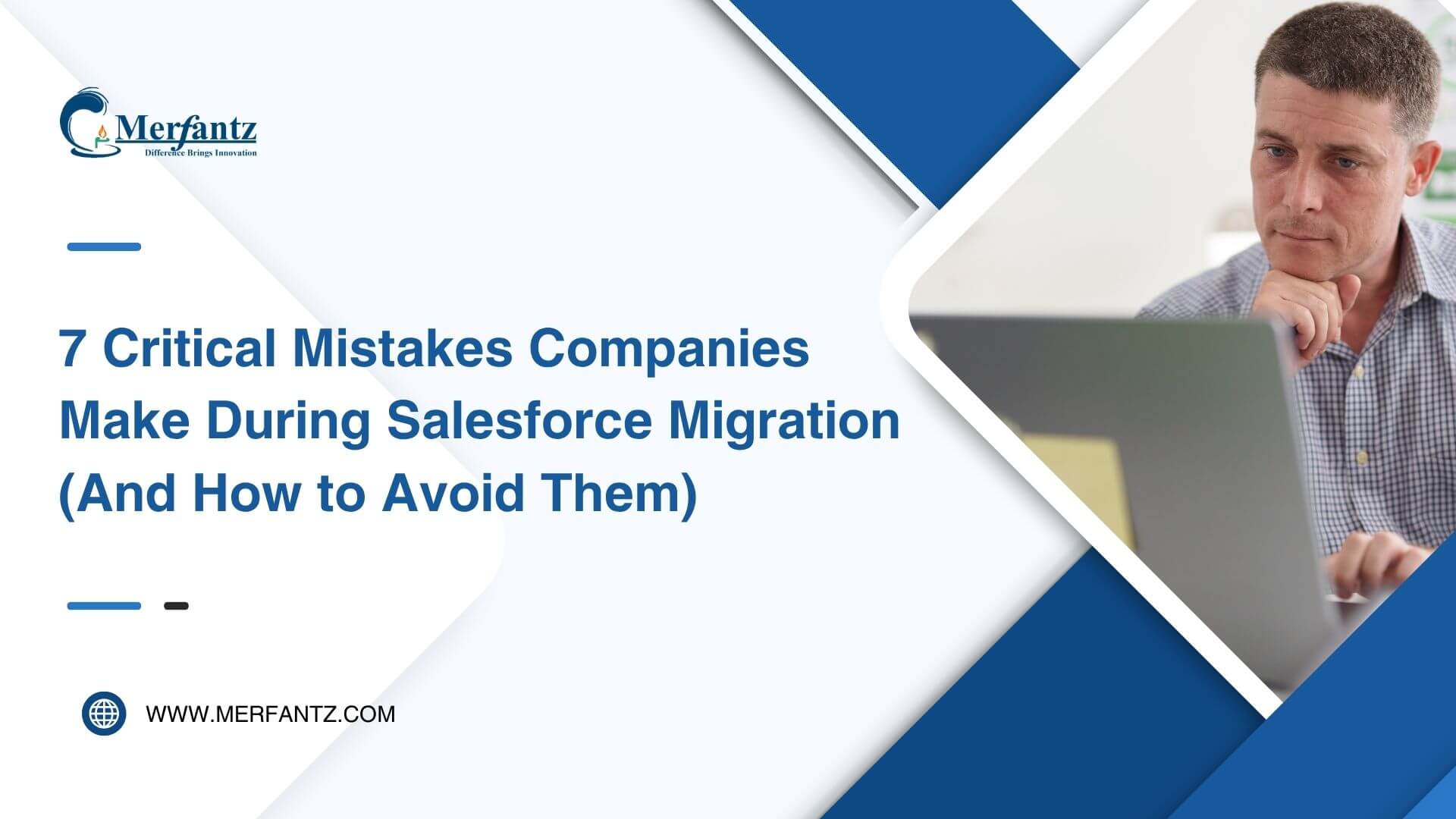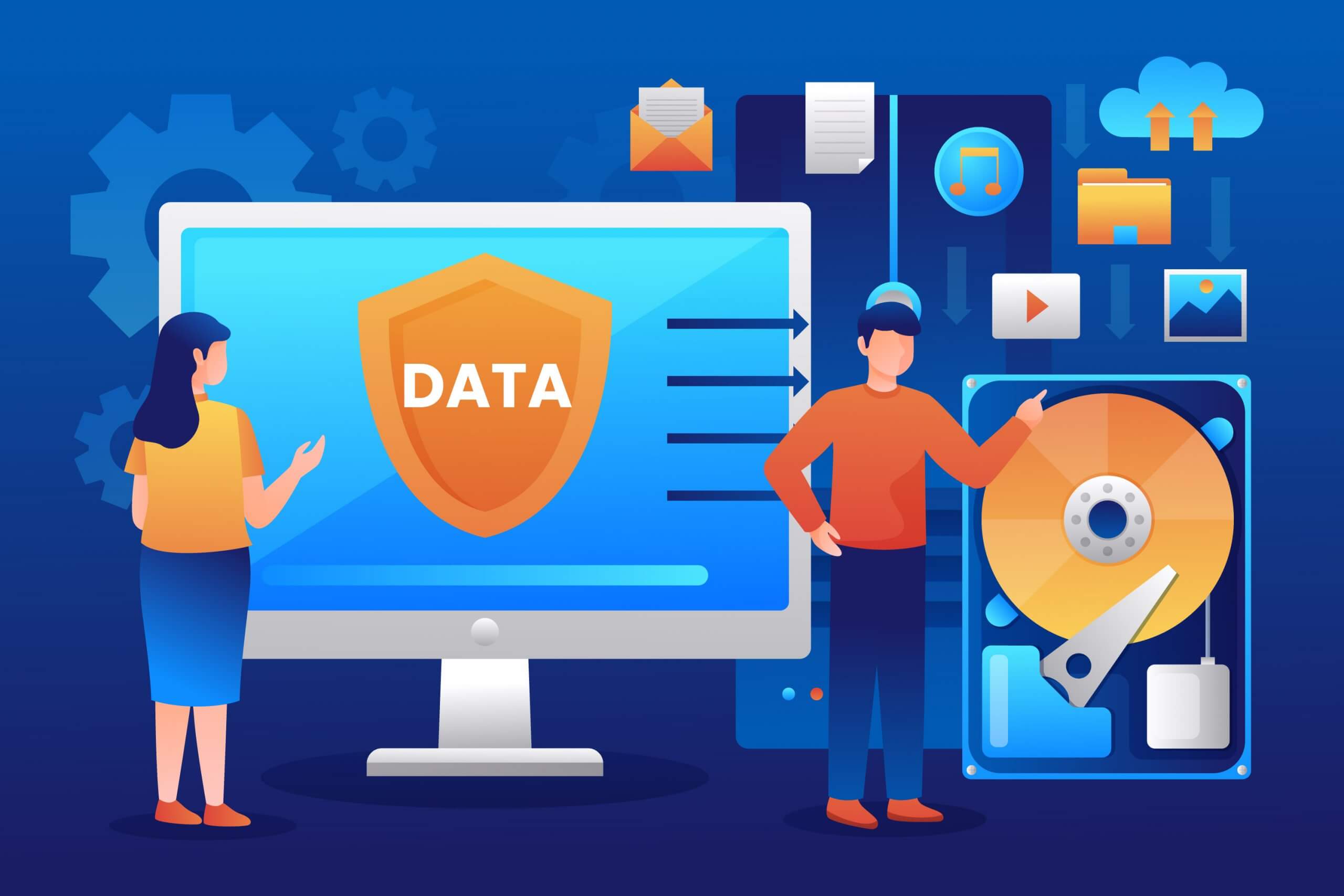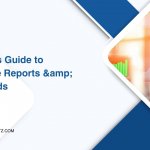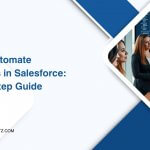
Fact: more than 70% of integration problems trace back to poor planning, not tech limits — a surprising gap for projects that touch every customer record.
I write from experience: moving salesforce data and connecting systems is a strategic initiative, not a one-off import. I focus on common pitfalls I see when teams treat a data migration like a simple copy task.
A bad start costs time, trust, and revenue. I will show how to define scope, inventory sources, and map records so relationships stay intact. I also explain tool choices like Data Loader, Skyvia, and integration platforms, and when each tool makes sense.
My goal is practical: help you protect data quality, secure regulated records, and cut over with minimal downtime. With the right governance, training, and rollback plans, a platform change can speed time-to-value and improve reporting.
Key Takeaways
- Plan migration as a strategic project, not a simple import.
- Inventory sources and map relationships before moving data.
- Choose tools based on volume, complexity, and schedule.
- Enforce governance, security, and compliance from day one.
- Run pilots, validate results, and prepare rollback plans.
Why Salesforce Data Migration Matters Right Now
Practical data moves matter because they change how teams work day to day. A disciplined transfer shapes sales, service, marketing, and analytics by creating one reliable record for every customer interaction.
What this work really involves beyond “moving records”
I define salesforce data migration as a multi‑phase operation influenced by source size, file formats, and data quality. Success depends on how well content maps to target objects and fields.
Beyond moving records, I preserve relationships, enforce validation rules, and transform values to match the new schema. That means keeping parent-child links, respecting limits, and testing lookups before full loads.
How a unified platform changes outcomes
A consolidated platform delivers a unified customer view that fuels automation and analytics. Sales teams get cleaner pipeline data. Support staff see full case histories. Marketers build accurate segments.
Now is the time for many businesses to consolidate systems, modernize CRM, and control costs. Careful preparation reduces downtime, cuts rework, and speeds ROI.
- Benefit: scalable org with consistent reporting.
- Focus: source discovery, data selection, and governance to avoid importing legacy issues.
- Security: compliance and encryption overlay the entire process for sensitive records.
Salesforce Migration: Understanding Scope, Sources, and Objectives
Start with outcomes, not spreadsheets: define what success looks like for users and leaders. I begin by linking project goals to clear business outcomes such as faster pipeline visibility, shorter case resolution, or better segment analytics in the new system.
Define scope and data domains. Decide which sales, marketing, and customer records to move — accounts, contacts, opportunities, cases, activities — and capture metadata that supports automations and reports.
Inventory every source system. List legacy CRMs, databases, spreadsheets, third‑party apps, and other orgs. Assign owners so subject‑matter experts can validate mapping and samples.
- I set explicit scope: full historical loads or recent transactional slices and archival rules for non‑critical history.
- I outline a target data model at a high level to align objects and fields with how the business will operate post‑cutover.
- I document dependencies like parent‑child load order and integrations to pause or re‑point during the migration process.
Governance and timeline matter. Include regulatory controls for sensitive records, set milestones for discovery, cleansing, pilots, and define acceptance criteria and KPIs for data completeness and accuracy.
Finally, secure executive sponsorship and cross‑functional alignment so the project has decision authority, testing support, and clear accountability through go‑live.
The Seven Critical Mistakes I See During Salesforce Migration—and How I Avoid Them
When teams assume every record must move, they inherit problems that slow adoption and analytics. I focus on targeted choices that protect users and keep the project on schedule.
Moving everything: poor selection and archiving
I run a data selection workshop and set archival rules so only essential legacy records transfer. This reduces volume and preserves compliance.
Skipping cleansing: letting quality issues persist
I never skip data cleansing. Duplicates or missing fields break automations and frustrate users. Cleanup is part of realistic budgeting.
Ignoring relationships: breaking dependencies
I load parents before children, validate unique IDs, and preserve lookups so records arrive connected, not orphaned.
Underestimating mapping and tool fit
I treat data mapping as first class work, align objects and fields, and pick migration tools that match volume and complexity.
No pilot or rollback; weak governance
I always run pilots in sandboxes, keep backups, and form a cross‑functional steering group. Training, encryption, access controls, and audit trails protect sensitive salesforce data and ease adoption.
- Phased runs reduce downtime; parallel processes keep teams productive.
- Budget for cleanup, tools, integrations, and training to avoid hidden costs.
- These steps form practical best practices for reliable migrated data.
Planning the Migration Process: From Strategy to Cutover
I treat the migration process like choreography: every step, owner, and timing must be rehearsed so the cutover runs smoothly. Preparation is foundational: define scope, set timelines with milestones, and lock in stakeholder alignment before any extraction begins.
I convert strategy into an executable plan with a clear scope statement, milestone schedule, and a RACI so everyone knows who does what and when. Then I sequence work: source discovery, mapping, cleansing, tool setup, pilot loads, validation, user training, and final cutover.
Parallel run vs. big bang: reducing downtime and risk
I choose parallel runs when the system surface area is large or downtime tolerance is low; big‑bang can work for small, contained projects. Either way, I document fallback options and go/no‑go criteria to limit disruption to users and business operations.
- Cutover plan: freeze windows, extraction order, validation checks, and rollback steps.
- Rehearsals: full‑copy or representative sandbox runs to validate performance and error handling.
- Security & monitoring: embed access controls, encryption, logging, and real‑time alerts before go‑live.
Finally, I publish communications with exact dates and instructions for users, enable post‑go‑live hypercare with SLAs, and track risks and assumptions so the project adapts as pilots reveal issues.
Selecting the Right Data: Source System Inventory and Data Selection Best Practices
My first step is to map every place data lives so stakeholders can decide what truly matters.
Build a full catalog: list legacy systems, CRMs, operational databases, spreadsheets, and third‑party apps. Capture owners and contact info so decisions are fast and accountable.
Assess fitness and relevance: profile duplicates, nulls, format variance, and field usage. Flag datasets that lack provenance or ownership for potential discard.
- I prioritize active customers and the last two to three years of opportunities while archiving deep history to external storage.
- I partner with legal and finance to set retention and archival policies so low‑value history does not burden the new org.
- I estimate volumes per object to pick tools and batch sizes, and I document lineage so teams can trace migrated records.
- I define minimum viable datasets for go‑live and stage less critical history to reduce risk and speed time‑to‑value.
- I flag PII and sensitive attributes early to apply controls during extraction and loading.
These steps keep data selection practical and auditable. Good inventory and clear criteria make any data migration predictable and aligned with business needs.
Designing a Scalable Salesforce Org: Data Model, Objects, and Fields
Simplifying an overgrown schema is the fastest way to cut technical debt and speed adoption. I use the redesign phase of a data migration as a deliberate chance to remove clutter and create a maintainable model.
I review legacy objects and remove unused fields and tables. Collapsing redundant structures reduces complexity and improves performance.
Simplifying legacy complexity for the new system
I align the data model with core business processes and reporting needs so the platform supports growth without rework. I separate transactional records from reference objects to manage volume.
Naming conventions for objects, fields and API alignment
I define standard naming rules and align labels with API names where practical. This boosts maintainability, helps admins find items fast, and reduces errors in automation and integration.
- Review and prune: remove unused objects and fields to cut technical debt.
- Standardize names: consistent object and field API names aid developers and integrations.
- Rationalize reference data: consolidate overlapping picklists and assign owners.
- Validate relationships: choose master-detail vs. lookup based on rollup needs and real-world dependencies.
- Document and test: a data dictionary and sandbox test loads confirm performance and mapping choices.
I enforce change guardrails so customizations remain controlled after go‑live. Clear documentation, external IDs for upserts, and a staged sandbox validation keep the design scalable and reliable.
Data Mapping and Unique IDs: Preserving Relationships and Integrity
Clear identifiers are the backbone of any data move that must keep relationships intact. I require stable unique identifiers in source data and then designate external IDs in the target so upserts match and preserve parent‑child links.
Assigning and validating unique identifiers
I test parent and child dependencies by loading parents first and confirming children resolve to correct IDs. This prevents orphans and keeps automation and rollups intact.
Gathering metadata samples
I collect metadata samples—field names, types, lengths, and picklist values—from each source system. That helps me spot truncation or type mismatches before a full run.
Creating a living mapping document
I author a living mapping document that maps every source table and field to target objects and fields with transformation rules, defaults, and deprecation notes.
- I normalize dates, currencies, and picklists so values pass validation rules.
- I flag mandatory fields and define fill strategies when source data is missing.
- I standardize reference data like states and industries to reduce dedupe issues.
- I validate assumptions with SMEs and run sandbox samples to confirm behavior.
Data Cleansing and Data Quality: Preparing to Migrate Salesforce Records
You cannot import what you cannot trust—so I start by proving the data is fit. I gather samples from every source to find duplicates, missing values, and anomalies before any extraction. Fixing issues early prevents legacy problems from moving into the new system.
I run deterministic and fuzzy matching to merge duplicates while preserving history and references. I then standardize emails, phones, addresses, and country/state formats so validation rules pass consistently.
- I backfill required fields with business rules, enrichment, or lookups to avoid load failures.
- I normalize picklists to approved values and remove near‑duplicates to simplify reports and automations.
- I convert dates, currencies, and numbers into compatible formats and clean malformed IDs, URLs, and unsupported characters.
I keep exception logs for records that fail cleansing thresholds and work with data owners to approve rules. I also protect sensitive attributes by masking and least‑privilege access in non‑production environments.
Measure readiness: I track pre‑ and post‑cleansing metrics so users see improvement and governance has a baseline for ongoing data quality during the migration.
Migration Tools Deep Dive: Import Wizard, Data Loader, Skyvia, and Jitterbit
The choice between desktop and cloud tooling shapes scheduling, backups, and control. I profile four common options so you can match tool capabilities to volume, governance, and cadence needs.
Data Import Wizard
I pick the import wizard for simple, in-app data import jobs under 50,000 records. It is user-friendly, handles basic duplicate management, and is good for admins who need quick loads without extra installs.
Data Loader (desktop)
I use the data loader when I need high-volume loads—up to millions of records—and full object support. It handles import, export, update, and delete but requires installation and lacks native scheduling.
Skyvia
Skyvia fits cloud-first teams. It offers 200+ connectors, CSV handling, scheduled jobs, Salesforce-to-Salesforce moves, and org backups. I prefer it when cross-system orchestration and automatic scheduling matter.
Jitterbit Data Loader
I leverage Jitterbit for free automation and bulk runs. It supports scheduling and backups but relies on community support and can be resource intensive for very large loads.
- I test batch sizes, concurrency, and error logging in pilots to tune performance.
- I configure upserts with external IDs and duplicate rules per tool to speed triage.
- I document runbooks and keep backups before major operations to enable rapid rollback.
Executing the Load: Pilot Runs, Error Handling, and Monitoring
I start every load phase with a controlled dry run in a sandbox to expose mapping, performance, and dependency issues before production. Pilot runs use realistic subsets so I can tune batch sizes and tool settings.
I load in ordered batches that respect parent‑child hierarchies and leverage upsert with external IDs. This preserves relationships and prevents duplicates during a data import.
Preconditions matter: backups must complete, cleansing is finished, and transformation rules are locked. I never push unverified source content to the live system.
- I build robust logging to capture row‑level errors, API responses, and validation failures so fixes target the root cause.
- I implement idempotent retries so failed records can be corrected and reprocessed without duplication.
- I monitor in real time with dashboards and logs to track throughput, failure rates, and bottlenecks.
- I coordinate integration freezes and maintain a go/no‑go checklist with thresholds for error rates and reconciliation metrics.
After each object load I validate counts and referential integrity. Documenting issues and resolutions during pilots makes the final cutover predictable and gives users confidence in the migrated data.
Post-Migration Validation and Continuous Improvement
After cutover, verification is non‑negotiable. I treat the first weeks as a structured audit to confirm that records, relationships, and key fields arrived intact.
Data verification for completeness, correctness, and relationships
I reconcile record counts and sample key fields to verify completeness. I confirm parent‑child links and lookup integrity so reports and automations behave as expected.
Cleanup: duplicates, user feedback, and quick fixes
I run targeted dedupe passes because merging sources often creates duplicate contacts, accounts, or leads. I prioritize fast fixes for broken lookups, required‑field gaps, and picklist mismatches found after go‑live.
I engage users with guided UAT checklists so frontline teams validate that the migrated data supports daily workflows and flag gaps early.
Operationalizing governance for ongoing data hygiene
I establish clear data governance: owners, SLAs for corrections, dashboards, and alerts. I harden validation rules gradually to protect quality without blocking users.
- Schedule backups and define restore steps.
- Monitor data quality with automated checks and SLAs.
- Keep mapping and documentation current as issues get fixed.
Continuous improvement matters: measure, learn, and iterate so the business gains confidence in reports and the system over time. These are practical best practices to keep your post‑cutover environment stable and trusted.
Security, Compliance, and Data Governance in Regulated Environments
Protecting regulated records starts with clear rules and early stakeholder alignment. For regulated industries, I bring legal and compliance into planning so we classify which fields need special handling before any extraction from legacy systems.
Access controls, encryption, and audit trails for sensitive data
I enforce least‑privilege access and field‑level security across extraction, staging, and load stages. I require encryption at rest and in transit for sensitive attributes so confidentiality stays intact during the entire process.
I also enable audit trails and field history tracking to record who changed what and when. These logs support internal reviews and external audits.
Aligning with GDPR, HIPAA, and CCPA while migrating salesforce data
I document processing activities, retention rules, and deletion policies to meet GDPR, HIPAA, and CCPA obligations. Sandboxes get masked or tokenized copies so customer privacy is preserved during testing and pilots.
- I validate vendors and tools against security standards and certifications before granting access to production data.
- I include breach response steps and incident management in the runbook to cut response time if an issue arises.
- I train users and admins on handling sensitive records so governance is practiced daily, not just written down.
Post‑go‑live reviews confirm controls remain effective. Regular checkpoints, automated checks, and clear ownership keep the platform compliant as the business and system evolve.
Conclusion
A well‑executed cutover turns careful planning into measurable business value.
I recap the essentials: avoid the seven critical mistakes—over‑selection, weak cleansing, broken relationships, poor mapping, tool misfit, no pilots, and thin governance—to protect value and accelerate time‑to‑ROI.
Disciplined planning, a full source inventory, and thoughtful data selection reduce risk, lower cost, and improve trust for users in the new system.
Strong mapping, stable IDs, and thorough cleansing set the stage for reliable analytics and automation, while the right tools—Import Wizard, Data Loader, Skyvia, or Jitterbit—cut effort and errors.
Run pilots, keep backups, monitor loads, and have rollback plans. Validate results, act on user feedback, and embed governance so quality improves after go‑live.
Document goals, commit to best practices, and run a pilot now to de‑risk your salesforce migration and deliver measurable business outcomes.
FAQ
What are the most common mistakes I should avoid when moving to a new CRM platform?
Why does data migration matter beyond just copying records?
How do I define scope and objectives for the migration project?
How do I identify which source systems and data types to migrate?
What’s the best approach to selecting which records to bring over?
How do I preserve relationships between records during the transfer?
What data quality steps should I run before loading data?
Which tools work best for different volumes and complexity?
How should I run pilots and dry runs to reduce cutover risk?
What error handling and logging practices do you recommend during loads?
How can I ensure compliance and security when transferring regulated data?
What governance and change management steps help adoption after migration?
How do I handle picklist and field mismatches between systems?
When should I choose a parallel run versus a big-bang cutover?
How do I validate that migrated data is complete and correct?
What post-migration tasks should be prioritized in the first 30 days?
Author Bio
Co-Founder & CMO at Merfantz Technologies Pvt Ltd | Marketing Manager for FieldAx Field Service Software | Salesforce All-Star Ranger and Community Contributor | Salesforce Content Creation for Knowledge Sharing







